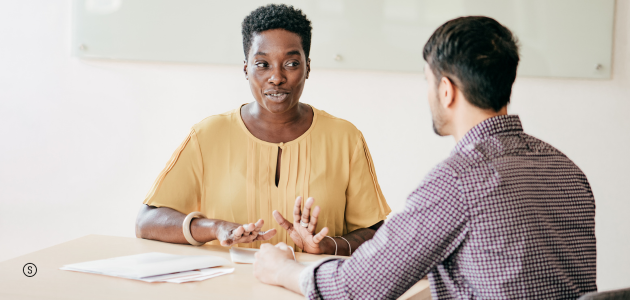By: C’pher Gresham, National Director of Expansion
Social Capital Markets [or SOCAP for short] just wrapped up, but the energy is still palpable. Overlooking Alcatraz and the Golden Gate Bridge, SOCAP is hosted on the edge of the bay at Fort Mason. Despite being in a picturesque location, the conversations rarely involve the scenery.
Everyone at SOCAP is energized by the future of social enterprise, impact investing, creating inclusive economies, and decidedly looking towards the future. Topics spanning continents drew parallels between disparate locations and cultures, such as how market-based solutions to water shortages in sub-Saharan Africa can influence water policy in a drought stricken California.
Although a healthy 2,500 people attended SOCAP this year, we know not every social entrepreneur or interested professional had the chance to attend. So, what did we learn at SOCAP? A lot. But a few things stuck out to us.
Impact Measurement Took the Stage
Impact measurement was truly on the top of everyone’s minds. From talking with impact investors to foundations, the ability to quantify impact in real terms that is actionable to the organization delivering the impact is crucial.
SEED SPOT’s Social Impact Analyst, John Schwarzlose affirmed that “impact measurement took center stage. Too much talk has been about how important it is for business to make impact, and not enough about how to actually measure and show the true value of that impact. The Rockefeller Foundation, the GIIN, and Acumen have been leading the charge on how best we can provide ways for entrepreneurs to measure and learn their value to their customers.”
©Social Capital Markets Flickr
Ecosystem Mapping
In a similar spirit of measurement, there were multiple sessions on mapping the stakeholders in each city’s rich ecosystem in order to identify gaps and address opportunities. While the terms ‘social entrepreneurship’ and ‘social enterprise’ have been around for quite a while, the broad usage has only recently become in vogue.
With more social enterprises being founded and organizations providing them expertise or capital, understanding the opportunities and gaps across the globe has become increasingly more important. Through sessions like “Entrepreneur Ecosystems: Which Countries Are Best?” and “Urban Ecosystems: Finding Partners for the Future of Cities”, explored the models of support in various locations, the organizations supporting ecosystems, and whether these organizations can be replicated across locations.
Mapping ecosystems provides a high-level view of the social enterprise or impact investing market place. For example, the Case Foundation is currently looking into the impact investing ecosystem – where the funds are primarily located and where the most impact dollars are allocated. Mapping these questions will help policy be dictated in areas that lack impact investing dollars or show opportunity for funds to target.
The next step from mapping the ecosystem is to study the efficacy of the programs within an ecosystem. The Aspen Network for Development Entrepreneurs and Emory University have partnered to study the accelerator landscape through the Global Accelerator Learning Initiative (GALI), which determines the efficacy of global accelerators in supporting entrepreneurs. Mapping ecosystems will help the global social entrepreneurship ecosystem become more organized and effective.
©Social Capital Markets Flickr
Inclusivity – Looking Beyond the Blinders
Truly caring about diverse populations from all corners of the world was a big portion of SOCAP this year. From a focus on cities as a center for change to highlighting traditionally underserved communities that are using entrepreneurship to raise their local economics, the spirit of inclusion was alive. The need to lower barriers to entry for minority and women entrepreneurs accessing financial instruments or social networks provided ample discussion on potential models. Many of the models were based on a number of different financing methods.
Many individuals talked about the incendiary rhetoric being employed in politics globally and urging social enterprise founders to lead by example in creating equality for their employees and their stakeholders. At SEED SPOT, we loved contributing to the inclusive innovation conversation, as it is core to our model of supporting entrepreneurs from diverse backgrounds.
©Social Capital Markets Flickr
Power of the Pitch
Meeting new people and connecting with impactful organizations is what SOCAP is all about. So, how did we maximize our time at SOCAP? We came in with a solid elevator pitch to clearly and quickly articulate the work we do. This enabled the conversations to be focused upon the details of the programs along with clear next steps
As part of the SOCAP entrepreneur program, a program designed for social entrepreneurs the day before SOCAP officially starts, SEED SPOT worked with 40 entrepreneurs on their business model and their pitch. We leveraged the SEED SPOT Impact Canvas, our proprietary business model formation methodology. Many of the entrepreneurs were well versed in the problem, solution, market, and their impact, yet struggled to clearly and concisely define their venture. We helped craft a powerful elevator pitch before they entered into the SOCAP for extensive networking [for an in-depth look at networking tips, check out our blog post on Networking].
©Social Capital Markets Flickr
Collaboration is KEY
“How can I help you?” was asked at the end of almost every SOCAP conversation. The spirit of collaboration was truly alive. said that “being able to collaborate and discuss with fellow impact makers shows the true value of SOCAP. Transparency is an ongoing challenge in every industry, but I felt that the environment allowed some of us to break down barriers.” Breaking down the barriers allows similar organizations to learn from one another and ultimately become stronger by delivering better impact to their stakeholders.
SOCAP was a whirlwind, but one full of wonder and excitement. The conversations, the connections, and the collaboration inspired the SEED SPOT team and we are ready for next year. We have one year until SOCAP17, so let’s make the most of it. The time is now to build sustainable social enterprises and show the world that business IS a force of positive change.
©Social Capital Markets Flickr
Welcome all dreamers. Becoming a part of the SEED SPOT family is just a step away. Visit our website to join our email list, sign up for one of our programs, or bring SEED SPOT to your city.









